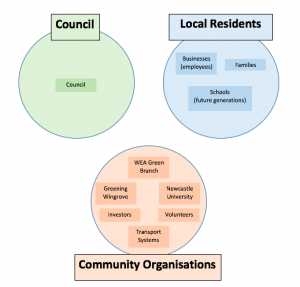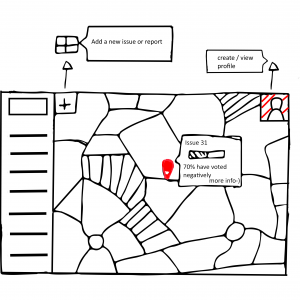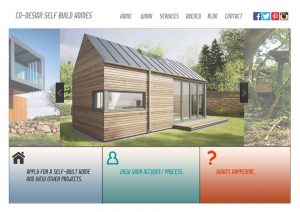Welcome to the first blog entry for TCP2031 Digital Civics. Today we had our first seminar where we all met each other and Sebastian – who will be our module leader this semester. Our team is made up of urban planning students and architecture and planning students. In our group we have me, Juliet from London, Jimmy from Germany, Hadrien from France, Lois from Canada, Mindaugas from Lithuania, Patrick from York and Angus from Alnwick, who unfortunately could not make the first seminar.
After introductions, we took a look at what our own strengths and weaknesses are and shared this with one another, from doing so we realised that overall we have a collective strength with visualisations and are individuals with an eye for detail and that we all have the ability to do research and analysis but we prefer to work with visuals and design work mostly.
During the seminar we discussed the project brief, covering what the overall aim of the project would be and talking about the area of Bensham in Gateshead; where our project is based. We looked at the area on Google Maps seeing its location to us at the University and also some of the statistical information such as deprivation levels, employment, and feeling of belonging. We had to set out some aims and objectives to what we want to achieve through the project this semester, our main objective is to produce an app or website that supports an issue that we will identify with our project partner so that we can help the locals of Bensham. This highlighted to us that the purpose of the module is to enable a connection between people and their community digitally. Lastly, we had to prepare some questions we would ask our project partner (when Jayne from Best of Bensham comes in) and to residents of Bensham.
Here is a list of some of the questions we have prepared to ask Jane next week so that we are informed on the needs and wants of Benham and the Best of Bensham group.
- What groups of people is Best of Bensham comprised of?
- What led to the formation of Best of Bensham?
- What are the key issues that Best of Bensham feel are present in the area?
- What is the typical method to event promotion by the group?
- What groups of people are most in need of help?
- What kinds of community involvement are already in place?
- Is there a main meeting place for locals to speak with those working for Best of Bensham?
- What groups of people live in Bensham?
Juliet

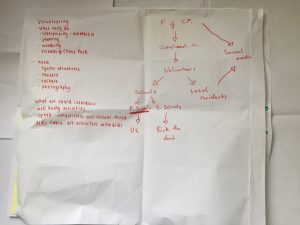
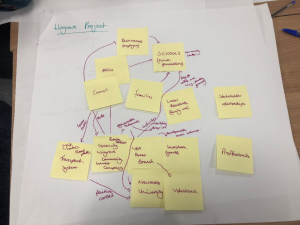 We began by naming the main stakeholders such as families, local residents, community organisations and WEA Green Branch, then branching off from these, connecting in other local groups. We discovered that the WEA Green Branch would have a link with the Greening Wingrove Community Interest Company and also with investors (who provide grants for events and developments). Volunteers and students from Newcastle University were also interlinked within this group as they would help provide support for many of the events done by WEA and Greening Wingrove. Another connection was found between the WEA and schools in the area, as education centres are a central hub for community connection. We felt having schools as one of the key stakeholders would help disburse information more effectively. Lastly, from schools there comes a link with families, the police, businesses and the council, therefore creating a bridge between the different interest groups within the area.
We began by naming the main stakeholders such as families, local residents, community organisations and WEA Green Branch, then branching off from these, connecting in other local groups. We discovered that the WEA Green Branch would have a link with the Greening Wingrove Community Interest Company and also with investors (who provide grants for events and developments). Volunteers and students from Newcastle University were also interlinked within this group as they would help provide support for many of the events done by WEA and Greening Wingrove. Another connection was found between the WEA and schools in the area, as education centres are a central hub for community connection. We felt having schools as one of the key stakeholders would help disburse information more effectively. Lastly, from schools there comes a link with families, the police, businesses and the council, therefore creating a bridge between the different interest groups within the area.